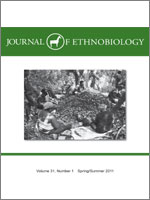Enslaved African and African Americans in the American South during the 17th through 19th centuries lived within a social order established by plantation owners and reinforced through the control of food. Therefore, the ways slaves acquired their food and other subsistence goods demonstrates aspects of the plantation's social relations. This article examines the connection between slaves' subsistence strategies and plantation social relations at Thomas Jefferson's Poplar Forest through the analysis of macrobotanical remains. Excavations at Poplar Forest uncovered a sub-floor pit of an antebellum slave cabin that was occupied from the 1840s through 1858 and possibly as late as the abolition of slavery. The seeds and wood indicate that the slaves' subsistence strategies included provisioning or receiving food from the plantation owner, production or slaves growing their own food, and procurement or the gathering of wild plants. By comparing the results from this sub-floor pit to analyses of macrobotanicals dating to Thomas Jefferson's ownership, I investigate aspects of plantation social relations at Poplar Forest and offer a better understanding of the social and natural environment in which the enslaved African Americans lived.
How to translate text using browser tools
1 March 2011
Provisioned, Produced, Procured: Slave Subsistence Strategies And Social Relations At Thomas Jefferson'S Poplar Forest
Jessica Bowes
ACCESS THE FULL ARTICLE
It is not available for individual sale.
This article is only available to subscribers.
It is not available for individual sale.
It is not available for individual sale.

Journal of Ethnobiology
Vol. 31 • No. 1
Spring/Summer 2011
Vol. 31 • No. 1
Spring/Summer 2011
paleoethnobotany
plantation social relations
Poplar Forest Virginia
slave subsistence




